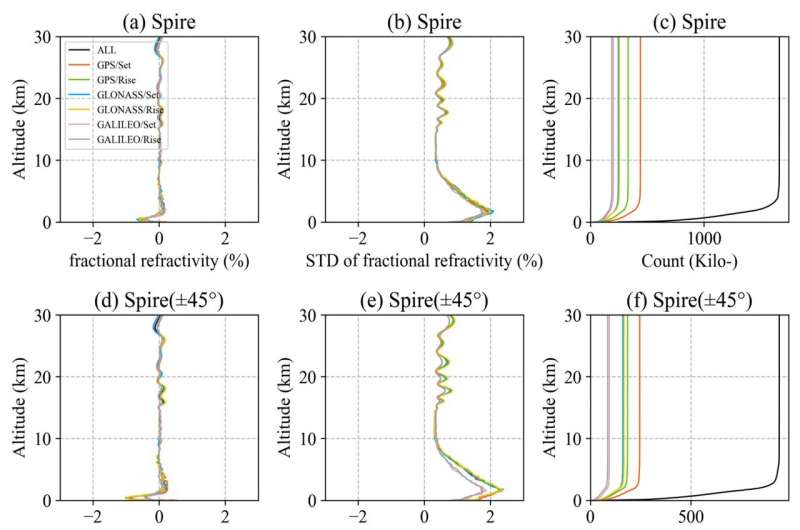This article has been reviewed according to Science X's editorial process and policies. Editors have highlighted the following attributes while ensuring the content's credibility:
fact-checked
trusted source
proofread
New-generation RO constellation 'spire' challenges COSMIC-2 in atmospheric remote sensing

In a recent study, scientists from the Aerospace Information Research Institute (AIR) under the Chinese Academy of Sciences (CAS) investigated the performance of a commercial Global Navigation Satellite System (GNSS) Radio Occultation (RO) mission and a cutting-edge RO constellation known as "Spire," comparing it with the established Constellation Observing System for Meteorology, Ionosphere, and Climate 2 (COSMIC-2).
The findings of this study were published in Remote Sensing on Oct. 24.
The study primarily focused on a statistical comparison between Spire and COSMIC-2, with a keen eye on their signal-to-noise ratios. It was observed that Spire, despite having a considerably weaker SNR on average, exhibited a penetration depth comparable to, and occasionally even better than, that of COSMIC-2. This result challenges conventional expectations surrounding SNR and RO mission performance, suggesting that other factors come into play.
The researchers discovered that the penetration depth of these RO systems is contingent on a multitude of factors, including SNR, GNSS technology, RO modes, topography, and latitude. These findings underscore the complex nature of RO missions and the diverse conditions they encounter as they navigate the Earth's atmosphere.
To assess the accuracy of the data products generated by Spire, the study used the European Center for Medium-Range Weather Forecasts and Radiosonde data as reference points. Remarkably, identical error characteristics were found for both Spire and COSMIC-2, indicating that, overall, the accuracy of Spire's neutral-atmosphere data products is comparable to that of COSMIC-2. This discovery paves the way for further advancements in the field of atmospheric data collection and analysis.
The study's results not only highlighted the potential of Spire but also emphasized the complexity and multifaceted nature of RO missions in various geographic and atmospheric conditions. The future of meteorology, ionosphere monitoring, and climate research holds great promise with the inclusion of Spire and other innovative technologies.
More information: Cong Qiu et al, Comparative Assessment of Spire and COSMIC-2 Radio Occultation Data Quality, Remote Sensing (2023). DOI: 10.3390/rs15215082
Provided by Chinese Academy of Sciences





















